2000: Dual Engine Centaur brought back into service for Starliner missions after 2000
Although the Dual Engine Centaur had not been used since 2000 after the introduction of the more powerful Atlas V, it was brought back into service for Starliner missions to allow a gentler trajectory and ensure crew can return to Earth in case of a problem.
June 2010: CST-100 Unveiled
In June 2010, the name CST-100 was first used when the capsule was unveiled to the public. The acronym "CST" stands for Crew Space Transportation.
2011: Validation Tests Begin
In 2011, various validation tests began on test articles.
September 2014: NASA expected to announce CCtCap contract winner
In September 2014, NASA was expected to announce its selection for the Commercial Crew Transportation Capability (CCtCap) contract.
September 16, 2014: Boeing and SpaceX awarded CCtCap contracts
On September 16, 2014, NASA announced that both Boeing and SpaceX would be awarded Commercial Crew Transportation Capability (CCtCap) contracts to develop crewed spacecraft. Boeing received US$4.2 billion to complete and certify the Starliner.
2015: Planned operational date
Boeing expressed optimism that the Starliner could be operational as early as 2015, contingent upon timely approvals and funding.
2017: Atlas V Rocket Assembled
By the end of 2017, the booster for the Orbital Flight Test, an Atlas V N22 rocket, was assembled at United Launch Alliance's (ULA) facility in Decatur, Alabama.
2017: Original Starliner Operational Date
Originally, Starliner was planned to be operational in 2017 but was repeatedly delayed due to management and engineering issues.
2017: Starliner mission originally scheduled for 2017
The Starliner mission, which eventually launched in 2024, was originally scheduled for 2017 but faced delays due to parachute system issues and wiring concerns.
April 5, 2018: First planned flight delayed
On April 5, 2018, NASA announced that the first planned two-person flight, originally slated for November 2018, was likely to occur in 2019 or 2020.
October 2018: Unpiloted orbital mission delayed
In October 2018, the first unpiloted orbital mission was delayed to April 2019, and the first crew launch was rescheduled to August 2019.
November 2018: Original first planned flight
The first planned two-person flight was originally slated for November 2018, but was later delayed.
March 2019: Further Test Flight Delays
In March 2019, Reuters reported that these test flights had been delayed by at least three months.
April 2019: Unpiloted Orbital Mission Scheduled
In April 2019, Boeing announced that the unpiloted orbital mission was scheduled for August 2019.
May 2019: Hot-Fire Testing Completed
In May 2019, all major hot-fire testing, including simulations of low-altitude abort-thruster testing, was completed using a "flight-like" service module test article.
August 2019: Crew launch rescheduled
In October 2018, the first crew launch was rescheduled to August 2019.
November 4, 2019: Pad Abort Test
On November 4, 2019, a pad abort test took place. One of the three parachutes failed to deploy, but landing was deemed safe, and the test a success.
December 2019: Starliner's First Uncrewed Orbital Flight Test
In December 2019, the first uncrewed Orbital Flight Test of the Starliner was conducted but deemed a partial failure.
2019: Validation Tests on Spacecraft
In 2019, validation tests continued on actual spacecraft.
2019: Orbital Flight Test scheduled
The Orbital Flight Test was scheduled for spring 2019.
January 2020: Boeing plans for three Starliner capsules with reuse capability in January 2020
As of January 2020, Boeing planned to have three Boeing Starliner capsules in service to fulfill the needs of the Commercial Crew Program, with each capsule expected to be reusable up to ten times with a six-month refurbishment time.
April 6, 2020: Boeing to fly a second uncrewed demonstration mission
On April 6, 2020, Boeing officials announced that the Starliner crew capsule would undergo a second uncrewed demonstration mission, Boeing Orbital Flight Test 2 (OFT-2), before carrying astronauts. NASA accepted Boeing's recommendation for this second unpiloted mission. Boeing also stated it would fund this unplanned test flight at no cost to taxpayers.
August 2020: Crew module for OFT-2 mission begins acceptance testing
In August 2020, the crew module for the OFT-2 mission began undergoing acceptance testing, which is designed to validate the spacecraft's systems before mating it with its service module, according to NASA.
August 25, 2020: Boeing to use only two Starliner capsules for all planned missions
On August 25, 2020, Boeing announced it would alternate between just two capsules for all planned Starliner missions instead of three.
August 25, 2020: Boeing sets stage for crewed Starliner demo, modifies docking system, and reduces capsule fleet
On August 25, 2020, Boeing announced plans for the first Starliner demonstration mission with astronauts in mid-2021. They also modified the Starliner docking system to include a re-entry cover and installed the OFT-2 spacecraft's propellant heater, thermal-protection tiles, and airbags. Boeing also announced on August 25, 2020, they would alternate between just two capsules for all planned Starliner missions instead of three.
November 10, 2020: Second orbital flight test delayed due to software issues
On November 10, 2020, NASA's Commercial Crew Program manager Steve Stich announced that the second orbital flight test would be delayed until the first quarter of 2021 due to software issues.
November 2020: Second orbital flight test expected in October or November 2020
In November 2020, The Washington Post reported that the second orbital flight test of Starliner, with objectives similar to the first, was expected to launch from Cape Canaveral sometime in October or November 2020.
2020: Likely Flight
The first planned two-person flight was likely to occur in 2020, after being delayed.
March 2021: OFT-2 uncrewed test flight scheduled for March 2021
In March 2021, the OFT-2 uncrewed test flight was scheduled, with the crewed flight targeted for launch the following summer.
August 2021: Issues detected with Starliner propulsion system, launch cancelled
In August 2021, during the launch window, issues were detected with 13 propulsion-system valves in the Starliner spacecraft prior to launch. Attempts to fix the problem on the launchpad and at the VIF failed, and Boeing decided to return the spacecraft to the factory, thus cancelling the launch.
August 2021: OFT-2 launch date moves to August 2021
In August 2021, the launch date of OFT-2 moved again, with the earliest estimated launch date set for August 2021.
September 2021: Root cause of Starliner propulsion issue undetermined, flight delayed indefinitely
By late September 2021, Boeing had not determined the root cause of the propulsion system issue, and the Starliner flight was delayed indefinitely.
October 2021: Plans announced for Orbital Reef commercial space station
In October 2021, Blue Origin, Boeing, and Sierra Nevada Corporation announced plans for a commercial space station called Orbital Reef, which could be serviced by both Starliner and Sierra Nevada's Dream Chaser spacecraft.
December 2021: Boeing to replace Starliner service module, anticipates OFT-2 in May 2022
In December 2021, Boeing decided to replace the entire service module of the Starliner and anticipated OFT-2 to occur in May 2022.
2021: Crewed Atlas V missions employ older Aerojet Rocketdyne SRBs since 2021
Since 2021, most Atlas V launches have used the newer Northrop Grumman GEM63 SRBs. However, these boosters are not rated for human spaceflight. Therefore, crewed missions employ the older Aerojet Rocketdyne AJ-60A SRBs.
May 2022: OFT-2 anticipated to occur in May 2022
In December 2021, Boeing anticipated OFT-2 to occur in May 2022, after deciding to replace the entire service module of the Starliner.
May 2022: Second Orbital Flight Test
In May 2022, a second Orbital Flight Test was conducted after the first one failed.
May 19, 2022: OFT-2 mission launched on May 19, 2022, carrying Rosie the Rocketeer
On May 19, 2022, the OFT-2 mission launched, carrying Rosie the Rocketeer test dummy suited in the blue Boeing inflight spacesuit. Two Orbital Maneuvering and Attitude Control (OMAC) thrusters failed during the orbital insertion burn, but the spacecraft compensated using remaining OMAC and Reaction Control System (RCS) thrusters. A couple of RCS thrusters also failed during docking and some thermal systems showed extra cold temperatures.
May 22, 2022: Starliner capsule docked with the International Space Station on May 22, 2022
On May 22, 2022, the Starliner capsule successfully docked with the International Space Station.
May 25, 2022: Starliner capsule returned from space and landed successfully on May 25, 2022
On May 25, 2022, the Starliner capsule returned from space and landed successfully. During reentry, one of the navigation systems lost communication with GPS satellites, which was not unexpected.
May 6, 2024: Starliner launch attempt scrubbed on May 6, 2024, due to oxygen valve problem
On May 6, 2024, a Starliner launch attempt was scrubbed due to an oxygen valve problem on the rocket.
June 2024: Starliner's Crew Flight Test and Thruster Malfunction
In June 2024, the Starliner's thrusters malfunctioned on approach to the ISS during the Crew Flight Test.
2024: United Launch Alliance ceases Atlas V production in 2024
In 2024, United Launch Alliance ceased production of the Atlas V rocket, which is used for Starliner flights, after producing vehicles for all remaining contracted launches. The vehicles have been allocated to customers, including the six needed for the remaining Starliner flights.
February 2025: Boeing's Starliner budget exceeds target
By February 2025, Boeing's Starliner program exceeded its budget by at least $2 billion.
February 2025: Budget overruns
Despite being initially awarded significantly more funding, Boeing faced substantial budget overruns for the Starliner program, exceeding $2 billion as of February 2025.
March 2025: Next flight may happen in late 2025 or early 2026
In March 2025, Commercial Crew Program manager Steve Stich stated that the next Starliner flight may happen in late 2025 or early 2026.
2026: Possible Flight
Commercial Crew Program manager Steve Stich stated in March 2025 that the next flight may happen in 2026.
2030: Uncertainty regarding Starliner missions before ISS retirement in 2030
It is unclear if it will be possible to operate up to six optional Starliner missions before the scheduled retirement of the ISS in 2030.
Mentioned in this timeline

SpaceX founded in is an American space technology company It...

Boeing is a multinational corporation that designs manufactures and sells...
Alabama is a state in the Southeastern United States bordered...
NASA the National Aeronautics and Space Administration is an independent...
Nevada a landlocked state in the Western US is the...

Blue Origin an American privately-funded aerospace manufacturer and sub-orbital spaceflight...
Trending

43 minutes ago Tommy Paul faces Elmer Moller in the 2025 French Open first round.

43 minutes ago Royal rift deepens: William's gesture as Harry faces estrangement and family tensions.
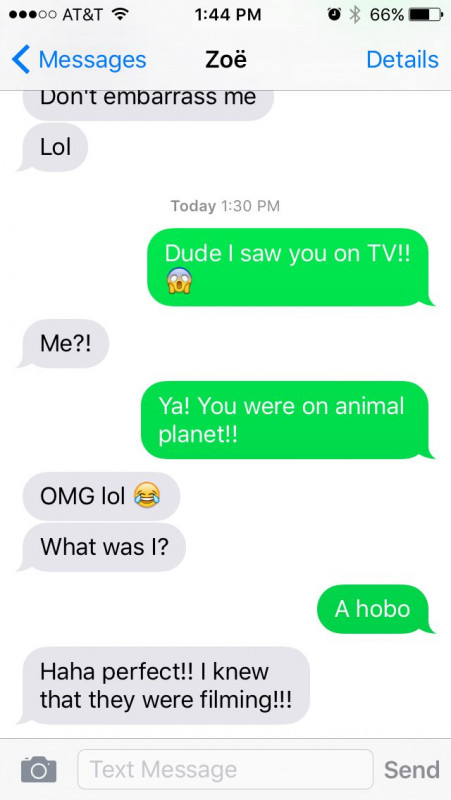
3 hours ago Arcane's Creative Team Discusses Challenges, Future Characters, and Epic Final Season on Netflix.
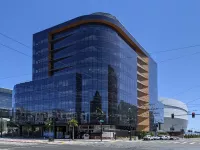
4 hours ago American tourist drugged and robbed of $123K in crypto by fake Uber driver.
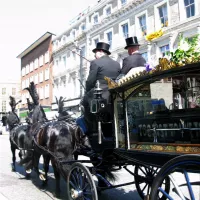
4 hours ago Funeral Directors: Mental Health Connection, Home Relocation, and Regulatory Veto.
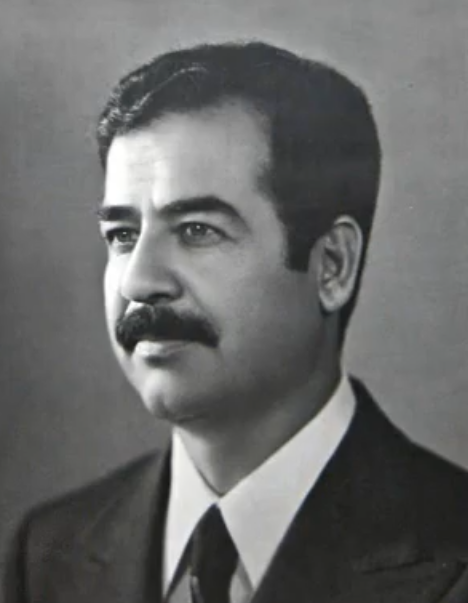
4 hours ago Trump advised to avoid Saddam's Iran mistake; port explosion recovery efforts continue.
Popular
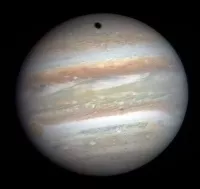
Jupiter the fifth planet from the Sun is the Solar...

Cristiano Ronaldo often nicknamed CR is a highly decorated Portuguese...

Steve Irwin the Crocodile Hunter was an influential Australian zookeeper...

LeBron James nicknamed King James is a professional basketball player...

Pope Francis is the current head of the Catholic Church...

Kash Patel is an American lawyer and former federal prosecutor...